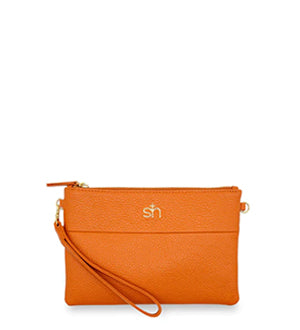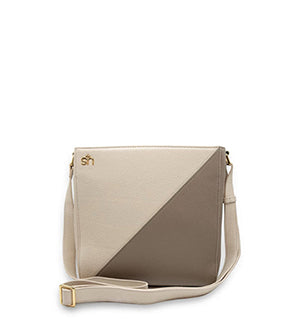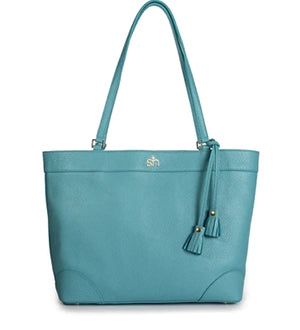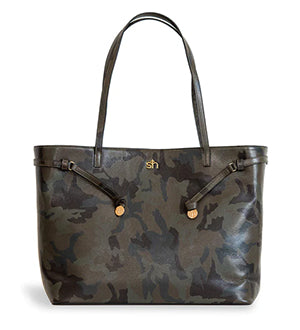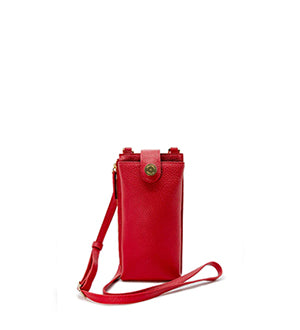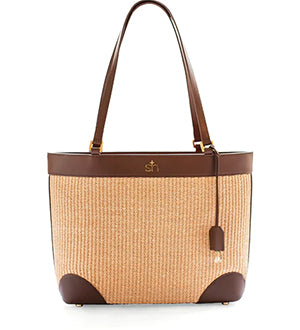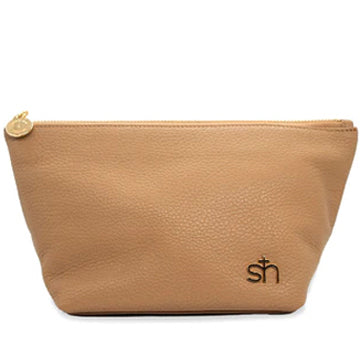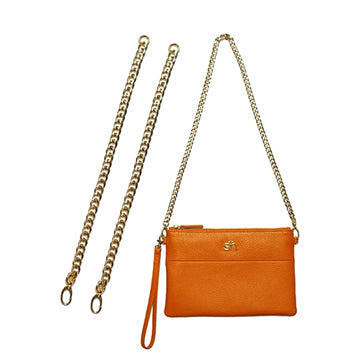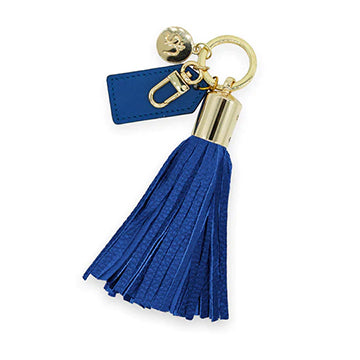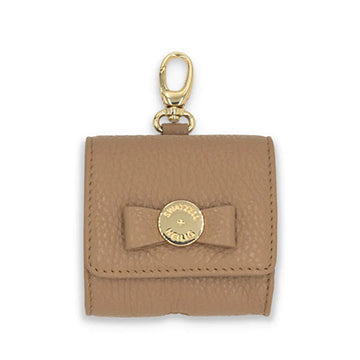Seasonal Care for Leather: What You Need to Know

Quick Listen:
Leather is a timeless material, known for its durability, sophistication, and versatility. Whether it's a leather jacket, bag, shoes, or furniture, proper care is essential to keep leather goods looking their best. However, leather's longevity and appearance are heavily influenced by seasonal changes. Extreme temperatures, moisture, and direct sunlight can cause leather to dry out, crack, fade, or become discolored. That's why understanding how to care for leather throughout the different seasons is crucial to preserving its beauty and durability.
In this blog, we'll explore the best practices for cleaning, conditioning, and storing leather during each season, offering tips to prevent damage and ensure your leather goods stay in top condition all year round.
Spring: Fresh Start for Your Leather
Spring brings a welcome change, but it can also introduce challenges for your leather items. The rising temperatures and increased humidity can affect the texture and condition of leather, so it's important to prepare your items for the transition.
Cleaning
After the colder months, leather goods may have accumulated dust, dirt, and salt residue from winter snow or rain. Start by gently wiping your leather items with a soft cloth to remove any visible dirt. If needed, use a cleaner specifically designed for leather to ensure a deep cleanse without damaging the material. Avoid using regular household cleaners as they can be too harsh and strip the leather's natural oils.
Conditioning
Leather can dry out during the winter months, especially in colder, drier environments. After cleaning, apply a high-quality leather conditioner. Conditioning restores the moisture and oils that leather loses over time, preventing it from becoming brittle or cracked. Make sure to use a conditioner that suits the type of leather you're caring for (e.g., for furniture, bags, or shoes). Be cautious not to over-condition, as too much product can make leather feel greasy or attract dirt.
Storage
As temperatures rise and humidity increases, it's essential to store your leather items properly. Avoid leaving leather goods in direct sunlight, as UV rays can cause the material to fade and lose its sheen. Store leather jackets, shoes, and bags in a cool, dry place. If you're storing leather furniture, consider using a breathable dust cover to protect it from dust while allowing air circulation.
Summer: Protect from Heat and Humidity
Summer heat and humidity present unique challenges for leather care. Excessive heat can dry out the leather, while high humidity can cause it to absorb moisture, leading to stains, warping, or mold growth. Here's how to maintain leather during the warmer months.
Cleaning
In summer, leather can attract more dirt, sweat, and oils from your skin, especially in items like bags, shoes, and jackets. Clean your leather goods more frequently to prevent buildup. Use a damp cloth to wipe off surface dirt, followed by a soft, dry cloth to remove any moisture. For deeper cleaning, choose a gentle, leather-specific cleaner.
Conditioning
Leather exposed to heat, such as from sun or direct contact with air conditioning, can become dry. Conditioning is essential during the summer to keep the leather flexible and hydrated. Choose a conditioner that replenishes natural oils without making the leather too soft or causing it to lose its structure. Apply conditioner lightly to avoid over-saturating the leather, which can lead to stains or discoloration.
Protection from Sun and Heat
Direct exposure to sunlight can cause leather to fade or dry out. Keep your leather goods out of direct sunlight whenever possible. If you're planning to be outdoors, such as on a summer trip, store your leather items in a protective bag or case. For leather furniture, ensure it's positioned away from windows or areas where sunlight streams in.
Humidity Control
Excess moisture can damage leather in the summer. If you live in a particularly humid area, consider using moisture-absorbing products, such as silica gel packs, to reduce humidity levels in your storage area. For bags and shoes, always dry them properly after they come into contact with rain or water. Never store leather items in plastic bags, as this traps moisture and can promote mold growth.
Fall: Preparing for Cold and Dry Conditions
As the weather shifts toward cooler and drier conditions in the fall, leather requires extra care to stay moisturized and flexible. The combination of dry air and fluctuating temperatures can lead to leather becoming stiff and prone to cracking.
Cleaning
Before the cooler weather sets in, it's important to clean your leather items thoroughly to remove any dirt, salt, or grime from outdoor activities. A gentle wipe with a microfiber cloth will help keep leather looking fresh. For tougher stains, use a specialized leather cleaner to lift debris without damaging the material. This is particularly important for leather shoes and jackets that might have been exposed to dust and dirt during the summer.
Conditioning
Leather needs extra hydration during the fall months, especially as indoor heating systems can sap moisture from the air. Conditioning your leather at the beginning of fall will help lock in moisture and prevent it from becoming brittle during the dry months ahead. Apply a conditioning product designed for your specific leather type, massaging it in gently. Allow the conditioner to sit for a few hours before wiping away any excess to avoid attracting dirt.
Storage
When the cooler weather hits, storing leather items properly becomes essential. If you have leather shoes, bags, or jackets, make sure they are stored in a place with stable temperatures and humidity levels. Keep them away from direct heat sources, such as radiators or fireplaces, which can dry out leather.
Winter: Protect from Cold and Moisture
Winter can be especially harsh on leather, as freezing temperatures and exposure to snow and salt can cause permanent damage if proper care isn't taken. During the colder months, the goal is to protect your leather items from moisture, salt, and extreme temperatures.
Cleaning
Winter exposes leather to a host of elements, including snow, ice, and road salt, all of which can damage leather. If your leather shoes or jacket come into contact with snow or salt, wipe them off immediately using a damp cloth. Avoid rubbing the leather too hard, as this can cause scuffing. After cleaning, ensure your leather goods are thoroughly dried, but not with direct heat (like a hairdryer or radiator), as this can cause cracking.
Conditioning
The dry winter air can leave leather feeling stiff and brittle. To prevent this, condition your leather items regularly. This helps prevent cracking and helps restore moisture. Be sure to use a heavier leather conditioner that's designed to provide extra protection during colder months.
Salt Removal
If road salt has accumulated on your leather boots or jacket, it's important to remove it as soon as possible to avoid staining or damage. Use a mixture of water and white vinegar to wipe off the salt. After cleaning, follow up with a conditioner to restore moisture.
Storing in Winter
For items you don't plan to use during the winter months, such as seasonal leather bags or shoes, store them in a cool, dry location. Stuff leather shoes and bags with paper to help maintain their shape, and avoid using plastic storage bags, which can trap moisture and cause mildew.
General Leather Care Tips
While each season has its own challenges, here are a few general leather care tips to help keep your leather goods in top condition year-round:
Avoid Water: Leather is naturally absorbent and can become damaged if exposed to excessive moisture. Always dry leather products naturally if they become wet, and use a leather protector spray to provide some water resistance.
Use Leather Protectants: Leather protectant sprays can help create a barrier against dirt, moisture, and stains. Apply a light coat to your leather items, particularly those exposed to the elements.
Store Leather Properly: Always store leather items in a cool, dry place away from direct sunlight, heat, and moisture. Use dust bags for smaller items, and for furniture, consider using covers for added protection.
Regular Inspections: Check your leather goods regularly for signs of wear and tear, such as cracks, discoloration, or peeling. Early intervention can prevent more significant damage.
Take Seasonal Care
Caring for leather is an ongoing process, and taking the time to protect and nourish your leather goods through each season will keep them looking great for years to come. By cleaning, conditioning, and storing leather properly, you can preserve its natural beauty and extend its lifespan, ensuring that it remains as functional and stylish as ever. Whether you're preparing for the sun-drenched days of summer or the chilly winds of winter, the right care will keep your leather goods in top shape, ready to complement your wardrobe and lifestyle.
You may also be interested in: Charleston Tote Collection Swatzell + Heilig
Indulge in the craftsmanship of attainable luxury Italian leather. Exclusive designs and impeccable functionality, handcrafted to last a lifetime. Shop the Swatzell + Heilig's fashion collection now!
Powered by flareAI.


